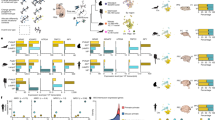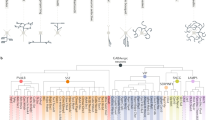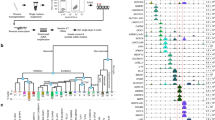Abstract
We describe convergent evidence from transcriptomics, morphology, and physiology for a specialized GABAergic neuron subtype in human cortex. Using unbiased single-nucleus RNA sequencing, we identify ten GABAergic interneuron subtypes with combinatorial gene signatures in human cortical layer 1 and characterize a group of human interneurons with anatomical features never described in rodents, having large ‘rosehip’-like axonal boutons and compact arborization. These rosehip cells show an immunohistochemical profile (GAD1+CCK+, CNR1–SST–CALB2–PVALB–) matching a single transcriptomically defined cell type whose specific molecular marker signature is not seen in mouse cortex. Rosehip cells in layer 1 make homotypic gap junctions, predominantly target apical dendritic shafts of layer 3 pyramidal neurons, and inhibit backpropagating pyramidal action potentials in microdomains of the dendritic tuft. These cells are therefore positioned for potent local control of distal dendritic computation in cortical pyramidal neurons.
This is a preview of subscription content, access via your institution
Access options
Access Nature and 54 other Nature Portfolio journals
Get Nature+, our best-value online-access subscription
$29.99 / 30 days
cancel any time
Subscribe to this journal
Receive 12 print issues and online access
$209.00 per year
only $17.42 per issue
Buy this article
- Purchase on Springer Link
- Instant access to full article PDF
Prices may be subject to local taxes which are calculated during checkout






Similar content being viewed by others
References
DeFelipe, J. & Jones, E. G. Cajal on the Cerebral Cortex. (Oxford University Press, Oxford, UK, 1988).
Ascoli, G. A. et al. Petilla terminology: nomenclature of features of GABAergic interneurons of the cerebral cortex. Nat. Rev. Neurosci. 9, 557–568 (2008).
Markram, H. et al. Reconstruction and simulation of neocortical microcircuitry. Cell 163, 456–492 (2015).
Tasic, B. et al. Adult mouse cortical cell taxonomy revealed by single cell transcriptomics. Nat. Neurosci. 19, 335–346 (2016).
Zeisel, A. et al. Brain structure. Cell types in the mouse cortex and hippocampus revealed by single-cell RNA-seq. Science 347, 1138–1142 (2015).
Macosko, E. Z. et al. Highly parallel genome-wide expression profiling of individual cells using nanoliter droplets. Cell 161, 1202–1214 (2015).
Jiang, X. et al. Principles of connectivity among morphologically defined cell types in adult neocortex. Science 350, aac9462 (2015).
Eyal, G. et al. Unique membrane properties and enhanced signal processing in human neocortical neurons. eLife 5, e16553 (2016).
Wang, B. et al. A subtype of inhibitory interneuron with intrinsic persistent activity in human and monkey neocortex. Cell Rep. 10, 1450–1458 (2015).
Molnár, G. et al. Complex events initiated by individual spikes in the human cerebral cortex. PLoS Biol. 6, e222 (2008).
Molnár, G. et al. Human pyramidal to interneuron synapses are mediated by multi-vesicular release and multiple docked vesicles. eLife 5, e18167 (2016).
Testa-Silva, G. et al. Human synapses show a wide temporal window for spike-timing-dependent plasticity. Front. Synaptic Neurosci. 2, 12 (2010).
Verhoog, M. B. et al. Mechanisms underlying the rules for associative plasticity at adult human neocortical synapses. J. Neurosci. 33, 17197–17208 (2013).
Szegedi, V. et al. Plasticity in single axon glutamatergic connection interneurons regulates complex events in the human neocortex to GABAergic. PLoS Biol. 14, e2000237 (2016).
Elston, G. N. Pyramidal cells of the frontal lobe: all the more spinous to think with. J. Neurosci. 20, RC95 (2000).
Morales, J. et al. Random positions of dendritic spines in human cerebral cortex. J. Neurosci. 34, 10078–10084 (2014).
Mohan, H. et al. Dendritic and axonal architecture of individual pyramidal neurons across layers of adult human neocortex. Cereb. Cortex 25, 4839–4853 (2015).
Grindberg, R. V. et al. RNA-sequencing from single nuclei. Proc. Natl. Acad. Sci. USA 110, 19802–19807 (2013).
Lacar, B. et al. Nuclear RNA-seq of single neurons reveals molecular signatures of activation. Nat. Commun. 7, 11022 (2016).
Picelli, S. et al. Full-length RNA-seq from single cells using Smart-seq2. Nat. Protoc. 9, 171–181 (2014).
Kawaguchi, Y. & Kubota, Y. GABAergic cell subtypes and their synaptic connections in rat frontal cortex. Cereb. Cortex 7, 476–486 (1997).
Lake, B. B. et al. Neuronal subtypes and diversity revealed by single-nucleus RNA sequencing of the human brain. Science 352, 1586–1590 (2016).
Oláh, S. et al. Output of neurogliaform cells to various neuron types in the human and rat cerebral cortex. Front. Neural Circuits 1, 4 (2007).
Kisvárday, Z. F. et al. Synapses, axonal and dendritic patterns of GABA-immunoreactive neurons in human cerebral cortex. Brain 113, 793–812 (1990).
Oláh, S. et al. Regulation of cortical microcircuits by unitary GABA-mediated volume transmission. Nature 461, 1278–1281 (2009).
Varga, C., Tamas, G., Barzo, P., Olah, S. & Somogyi, P. Molecular and electrophysiological characterization of GABAergic interneurons expressing the transcription factor COUP-TFII in the adult human temporal cortex. Cereb. Cortex 25, 4430–4449 (2015).
Zemankovics, R., Káli, S., Paulsen, O., Freund, T. F. & Hájos, N. Differences in subthreshold resonance of hippocampal pyramidal cells and interneurons: the role of h-current and passive membrane characteristics. J. Physiol. (Lond.) 588, 2109–2132 (2010).
Katona, I. & Freund, T. F. Multiple functions of endocannabinoid signaling in the brain. Annu. Rev. Neurosci. 35, 529–558 (2012).
Kerekes, B. P. et al. Combined two-photon imaging, electrophysiological, and anatomical investigation of the human neocortex in vitro. Neurophotonics 1, 011013 (2014).
Freund, T. F. & Buzsáki, G. Interneurons of the hippocampus. Hippocampus 6, 347–470 (1996).
Hawrylycz, M. J. et al. An anatomically comprehensive atlas of the adult human brain transcriptome. Nature 489, 391–399 (2012).
Lein, E. S. et al. Genome-wide atlas of gene expression in the adult mouse brain. Nature 445, 168–176 (2007).
Xu, Q., Cobos, I., De La Cruz, E., Rubenstein, J. L. & Anderson, S. A. Origins of cortical interneuron subtypes. J. Neurosci. 24, 2612–2622 (2004).
DeFelipe, J. Types of neurons, synaptic connections and chemical characteristics of cells immunoreactive for calbindin-D28K, parvalbumin and calretinin in the neocortex. J. Chem. Neuroanat. 14, 1–19 (1997).
von Economo, C. Eine neue Art Spezialzellen des Lobus cinguli and Lobus insulae. Zschr. ges Neurol. Psychiatry 100, 706–712 (1926).
Nimchinsky, E. A., Vogt, B. A., Morrison, J. H. & Hof, P. R. Spindle neurons of the human anterior cingulate cortex. J. Comp. Neurol. 355, 27–37 (1995).
Gabbott, P. L. A. Subpial Fan Cell” - a class of calretinin neuron in layer 1 of adult monkey prefrontal cortex. Front. Neuroanat. 10, 28 (2016).
Miller, J. A. et al. Transcriptional landscape of the prenatal human brain. Nature 508, 199–206 (2014).
Somogyi, P. A specific ‘axo-axonal’ interneuron in the visual cortex of the rat. Brain Res. 136, 345–350 (1977).
Tamás, G., Buhl, E. H. & Somogyi, P. Fast IPSPs elicited via multiple synaptic release sites by different types of GABAergic neuron in the cat visual cortex. J. Physiol. (Lond.) 500, 715–738 (1997).
Kisvárday, Z. F., Martin, K. A. C., Whitteridge, D. & Somogyi, P. Synaptic connections of intracellularly filled clutch cells: a type of small basket cell in the visual cortex of the cat. J. Comp. Neurol. 241, 111–137 (1985).
Lee, A. J. et al. Canonical organization of layer 1 neuron-led cortical inhibitory and disinhibitory interneuronal circuits. Cereb. Cortex 25, 2114–2126 (2015).
Tremblay, R., Lee, S. & Rudy, B. GABAergic interneurons in the neocortex: from cellular properties to circuits. Neuron 91, 260–292 (2016).
Gjorgjieva, J., Drion, G. & Marder, E. Computational implications of biophysical diversity and multiple timescales in neurons and synapses for circuit performance. Curr. Opin. Neurobiol. 37, 44–52 (2016).
Palmer, L. M. et al. The cellular basis of GABA(B)-mediated interhemispheric inhibition. Science 335, 989–993 (2012).
Klausberger, T. & Somogyi, P. Neuronal diversity and temporal dynamics: the unity of hippocampal circuit operations. Science 321, 53–57 (2008).
Borg, I. et al. Disruption of Netrin G1 by a balanced chromosome translocation in a girl with Rett syndrome. Eur. J. Hum. Genet. 13, 921–927 (2005).
Molinari, F. et al. Truncating neurotrypsin mutation in autosomal recessive nonsyndromic mental retardation. Science 298, 1779–1781 (2002).
Mak, I. W., Evaniew, N. & Ghert, M. Lost in translation: animal models and clinical trials in cancer treatment. Am. J. Transl. Res. 6, 114–118 (2014).
Cavanaugh, S. E., Pippin, J. J. & Barnard, N. D. Animal models of Alzheimer disease: historical pitfalls and a path forward. ALTEX 31, 279–302 (2014).
Krishnaswami, S. R. et al. Using single nuclei for RNA-seq to capture the transcriptome of postmortem neurons. Nat. Protoc. 11, 499–524 (2016).
Bolger, A. M., Lohse, M. & Usadel, B. Trimmomatic: a flexible trimmer for Illumina sequence data. Bioinformatics 30, 2114–2120 (2014).
Li, B. & Dewey, C. N. RSEM: accurate transcript quantification from RNA-Seq data with or without a reference genome. BMC Bioinformatics 12, 323 (2011).
Trapnell, C. et al. Differential gene and transcript expression analysis of RNA-seq experiments with TopHat and Cufflinks. Nat. Protoc. 7, 562–578 (2012).
Wang, L., Wang, S. & Li, W. RSeQC: quality control of RNA-seq experiments. Bioinformatics 28, 2184–2185 (2012).
DeLuca, D. S. et al. RNA-SeQC: RNA-seq metrics for quality control and process optimization. Bioinformatics 28, 1530–1532 (2012).
Anders, S., Pyl, P. T. & Huber, W. HTSeq--a Python framework to work with high-throughput sequencing data. Bioinformatics 31, 166–169 (2015).
Aevermann, B. et al. Production of a preliminary quality control pipeline for single nuclei RNA-seq and its application in the analysis of cell type diversity of post-mortem human brain neocortex. Pac. Symp. Biocomput. 22, 564–575 (2017).
R Development Core Team. R: a Language and Environment for Statistical Computing. (R Found. Stat. Comput., Vienna, Austria, 2016).
Lawrence, M. et al. Software for computing and annotating genomic ranges. PLOS Comput. Biol. 9, e1003118 (2013).
Robinson, M. D., McCarthy, D. J. & Smyth, G. K. edgeR: a Bioconductor package for differential expression analysis of digital gene expression data. Bioinformatics 26, 139–140 (2010).
Fan, J. et al. Characterizing transcriptional heterogeneity through pathway and gene set overdispersion analysis. Nat. Methods 13, 241–244 (2016).
Van Der Maaten, L. J. P. & Hinton, G. E. Visualizing high-dimensional data using t-SNE. J. Mach. Learn. Res. 9, 2579–2605 (2008).
Ester, M., Kriegel, H. P., Sander, J. & Xu, X. A density-based algorithm for discovering clusters in large spatial databases with noise. KDD 2, 226–231 (1996).
Liu, Y., Hayes, D. N., Nobel, A. & Marron, J. S. Statistical significance of clustering for high-dimension, low–sample size data. J. Am. Stat. Assoc. 103, 1281–1293 (2008).
Tasic, B. et al. Shared and distinct transcriptomic cell types across neocortical areas. Preprint at bioRxiv https://doi.org/10.1101/229542 (2017).
Ritchie, M. E. et al. limma powers differential expression analyses for RNA-sequencing and microarray studies. Nucleic Acids Res. 43, e47 (2015).
Zeng, H. et al. Large-scale cellular-resolution gene profiling in human neocortex reveals species-specific molecular signatures. Cell 149, 483–496 (2012).
Paxinos, G. & Franklin, K. The Mouse Brain in Stereotaxic Coordinates. (Academic Press, Cambridge, MA, USA, 2012).
Faragó, N. et al. Digital PCR to determine the number of transcripts from single neurons after patch-clamp recording. Biotechniques 54, 327–336 (2013).
Acknowledgements
The authors thank the Allen Institute for Brain Science founders, Paul G. Allen and Jody Allen, for their vision, encouragement, and support. The authors thank L. Christiansen and F. Zhang from Illumina, Inc. for their assistance with RNA sequencing. This work was supported by the ERC Interimpact project (G.T.), the National Institute of Mental Health (USA) RFA MH 17 210 (E.S.L., G.T.), the Hungarian Academy of Sciences (G.T.), the National Research, Development and Innovation Office of Hungary (GINOP-2.3.2-15-2016-00018, VKSZ-14-1-2015-0155), and by the National Brain Research Program, Hungary (G.T.).
Author information
Authors and Affiliations
Contributions
Conceptualization, E.S.L., R.S.L., G.T. Methodology, R.D.H., M.N., J.L.C., P.B., L.G.P., G.T. Validation, J.L.C., S.-L.D., G.M., G.T. Formal analysis, T.E.B., B.D.A., J.M.M., J.A.M., P.V., M.R., S.B., R.H.S., E.B., J.B., G.O., G.M. Investigation, R.D.H., M.N., J.L.C., F.D.-F., S.I.S., K.A.S., A.W., D.N.T., Z.M., E.B., J.B., Á.K.K., N.F., B.K., M.R., G.M., A.O.,G.O., G.T. Resources, E.S.L., F.J.S., N.J.S., R.H.S., R.S.L., G.T. Data curation, T.E.B., B.D.A., J.M.M., J.A.M., P.V., S.B. Writing – original draft, T.E.B. R.D.H., J.L.C., J.A.M., E.S.L., E.B., G.O., G.T. Writing – review and editing, T.E.B., R.D.H., J.A.M., R.H.S., R.S.L., E.S.L., G.T. Visualization, T.E.B., R.D.H., J.L.C., S.-L.D., J.A.M., E.B., G.M., G.O. Supervision, E.S.L., F.J.S., N.J.S., R.H.S., R.S.L, G.T. Project administration, E.S.L., S.M.S., G.T. Funding acquisition, E.S.L., F.J.S., R.S.L., G.T.
Corresponding authors
Ethics declarations
Competing interests
The authors declare no competing interests.
Additional information
Publisher’s note: Springer Nature remains neutral with regard to jurisdictional claims in published maps and institutional affiliations.
Integrated supplementary information
Supplementary Figure 1 Gating strategy for collection of single nuclei.
A, Nuclei were first gated based on size (forward scatter area, FSC-A) and granularity (side scatter area, SSC-A). B, Nuclei were then gated on DAPI fluorescence, followed by gates to exclude doublets and aggregates (C – FSC-single cells [SC], D – SSC-SC). E, Lastly, nuclei were gated based on NeuN Alexa Fluor 594 signal (NeuN-AF594-A) to differentiate neuronal (NeuN+) and non-neuronal (NeuN-) nuclei.
Supplementary Figure 2 Marker gene expression patterns across identified single nuclei clusters.
A, Heatmap of log-normalized expression (CPM) in single nuclei grouped by clusters that have been ordered by transcriptomic similarity. Canonical gene markers (SNAP25, GAD1, SLC17A7) classify clusters into broad classes of excitatory and inhibitory neuron and non-neuronal cell types. Within these broad types, many genes discretely mark individual clusters. B, Colorimetric ISH in mouse cortex of marker genes shown for human temporal cortex in Figure 1. Red arrows highlight cells with expression in layer 1. ISH experiments were repeated on multiple tissue specimens as follows: Sst, Lhx6,Ndnf (n=2); Slc17a7, Vip, Sema3c (n=3), Cck (n=4); Reln, Cnr1 (n=5); Gad1, Pvalb (n=20).
Supplementary Figure 3 Transcriptomic matching of clusters to previously reported clusters in mouse and human cortex.
A, Heatmap of expression correlations between pairs of clusters from this study and human cortical clusters reported by Lake et al. 22 based on median expression of [400] genes with cluster-specific expression in both studies. Reciprocal best matching cluster pairs are labeled. B, Proportion of nuclei expressing (CPM > 1) [400]168 genes for each pair of matching clusters labeled in A. Genes that are cluster-specific in both studies are labeled. C, Heatmap of median log2-expression for select marker genes in both studies with matching clusters labeled. D, Heatmap of expression correlations between pairs of clusters from this study and mouse cortical clusters reported by 4. Note that the same color scale is used for correlations as in A. E, Proportion of nuclei or cells expressing (CPM > 1) 212[400] genes for each pair of best matching clusters labeled in D. Pearson’s correlations are reported at the top of each plot.
Supplementary Figure 4 Diverse expression patterns of voltage-gated ion channels and receptors among GABAergic clusters.
Violin plots show the distribution of expression levels (CPM) within clusters and are scaled independently for each gene by the maximum expression across clusters for that gene. Expression is on a linear scale and dots indicate median expression. Numbers denote the number of nuclei in each cluster.
Supplementary Figure 5 Additional molecular phenotype information of RCs in layer 1 of the human cerebral cortex.
A, Further immunolabeling showed that RCs were immunopositive for gamma-aminobutyric acid (GABA) (n=2), and for chicken ovalbumin upstream promoter transcription factor II (NR2F2) (n=2). In addition, all tested RCs were negative for many common interneuron markers including parvalbumin (n=3), neuronal nitric oxide synthase (n=4), neuropeptide Y (n=2), calbindin (n=2), and choline acetyltransferase (n=3). B, Expression distributions of marker genes in all cell types in human temporal cortex layer 1 (left) and mouse primary visual cortex (right; data from 4). Expression is on a linear scale and dots indicate median expression. Numbers denote the number of nuclei in each cluster. C, Multiplex FISH validation of rosehip marker co-expression. Arrowheads show examples of RCs based on marker gene expression identified from RNA-Seq data. D, Multiplex FISH of approximately 2 mm section of layer 1 and upper layer 2 with rosehip interneurons labeled based on marker gene expression. 300 µm diameter circles approximate the maximum extent of rosehip axonal arbors (see Figure 2E). Multiplex FISH experiments were conducted on n=2 tissue donors.
Supplementary Figure 6 Multiplex FISH validation of rosehip marker co-expression in parietal (Brodmann Area 40) and frontal (Brodmann Area 9) regions of cortex.
A-F, Three distinct gene combinations were run in each brain region. Arrowheads show examples of RCs located in layer 1 of each brain region based on marker gene expression identified from RNA-Seq data. RCs were double positive for the marker genes shown and were either negative for CNR1 or had very low levels of CNR1 (C, E) in comparison to adjacent CNR1-positive cells (C). Multiplex FISH experiments were conducted on n=2 tissue donors.
Supplementary information
Supplementary Text and Figures
Supplementary Figures 1–6
Rights and permissions
About this article
Cite this article
Boldog, E., Bakken, T.E., Hodge, R.D. et al. Transcriptomic and morphophysiological evidence for a specialized human cortical GABAergic cell type. Nat Neurosci 21, 1185–1195 (2018). https://doi.org/10.1038/s41593-018-0205-2
Received:
Accepted:
Published:
Issue Date:
DOI: https://doi.org/10.1038/s41593-018-0205-2
This article is cited by
-
Local field potentials, spiking activity, and receptive fields in human visual cortex
Science China Life Sciences (2024)
-
Multimodal Nature of the Single-cell Primate Brain Atlas: Morphology, Transcriptome, Electrophysiology, and Connectivity
Neuroscience Bulletin (2024)
-
Functional genomics and systems biology in human neuroscience
Nature (2023)
-
Developmental mechanisms underlying the evolution of human cortical circuits
Nature Reviews Neuroscience (2023)
-
Correlation Analysis of Molecularly-Defined Cortical Interneuron Populations with Morpho-Electric Properties in Layer V of Mouse Neocortex
Neuroscience Bulletin (2023)



